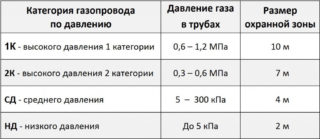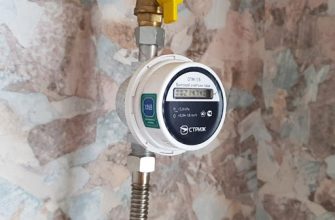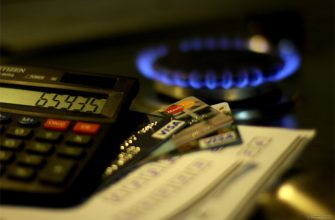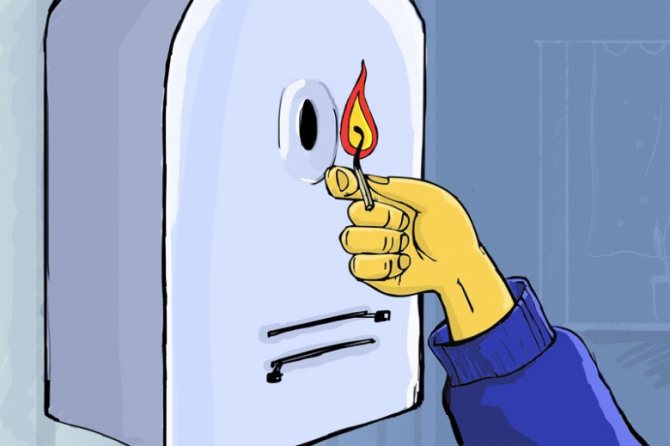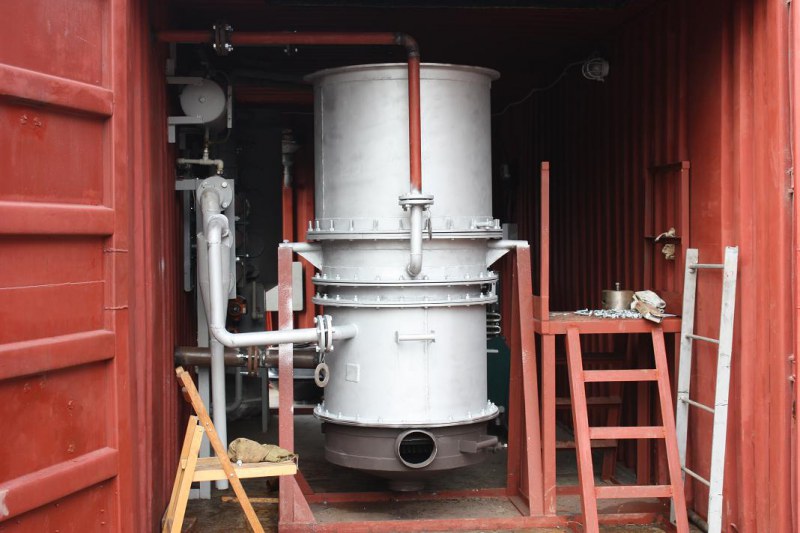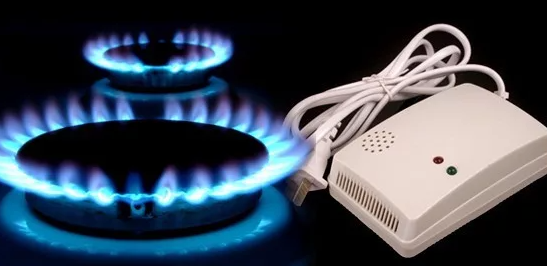Natural gas remains the main type of heating in the private sector. It is affordable, cheap, and highly effective. To supply blue fuel to your home, you need to choose the right gas pipes. All nuances are taken into account: gas pressure, distance from the mainline, method of installation.
- Varieties of gas pipelines
- Low pressure lines
- Medium pressure lines
- High pressure lines
- Selection of pipes for a gas pipeline
- Which pipes are best used for gas
- Standards and restrictions for pipe laying
- In the apartment
- In a private house
- Gas pipe laying options
- Underground
- Overground
- Interior
- Gas pipeline security zone
Varieties of gas pipelines
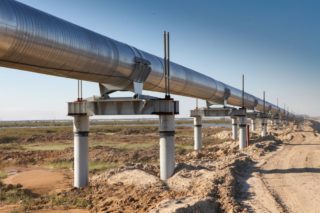
Gas pipeline - communication, including pipes for gas transmission, pumps, treatment stations, distribution points and much more. On his site, the consumer is faced with the simplest structure of a pipeline, valves and counters. Despite the simplicity, the principle of operation of the circuit is the same as that of the highway.
Gas pipelines are divided into 2 main categories:
- trunk lines - supply gas over very long distances;
- distribution - they move blue fuel from the gas distribution station to the end consumer.
The latter are divided into lines with different pressures.
Low pressure lines
Gas is supplied under a pressure of no more than 0.005 MPa. Under this pressure, methane flows to the stove, heating boiler, boiler. Although the pressure is low, gas leaks pose the risk of accidents and explosions.
Steel, copper and polyethylene pipes for gas pipelines can easily withstand such a small pressure.
Medium pressure lines
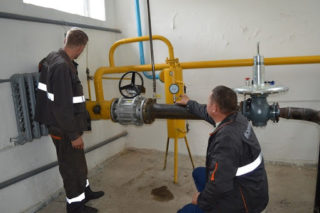
Gas is transported under pressure from 0.005 to 0.3 MPa. Under such a pressure, it is allowed to supply fuel to industrial consumers within settlements. The line supplies gas to reduction points, from which gas is redistributed to multi-apartment residential buildings, public and administrative. It is allowed to lay a gas pipeline inside production facilities.
The medium pressure line to a private house is prohibited.
High pressure lines
This includes gas pipelines of categories 1 and 2. In the first case, the pressure in the pipe reaches 0.6-1.2 MPa and higher, in the second - 0.3-0.6 MPa. Lines of the 1st category are being built to supply gas to turbine plants, to factories where high pressure gas is required.
Category 2 gas pipeline is used within the city to supply fuel to enterprises or distribution points.
Selection of pipes for a gas pipeline
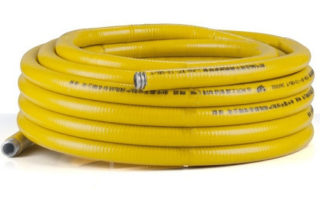
Which pipes and why are used for internal gas pipelines depends on many factors:
- Purpose - gas is supplied to the consumer with a minimum pressure. When installing gas supply, you can take metal-plastic, steel and copper pipes.
- UV action - steel and copper products can be installed anywhere inside and outside the house. Plastic ones are sensitive to the action of sunlight, they are located in shaded places.
- Laying method - a steel or copper gas pipeline is laid above the ground, underground, in walls, in open places. Plastic is allowed to be laid only underground outside the house and only in open places inside the building.
- Durability - copper lasts the longest. Steel gas pipes are susceptible to corrosion and need protection. Their service life is shorter.
- Difficulty - plastic pipes are flexible, soldered together. In this way, contours of any complexity are constructed.Steel need to be welded and connected through fittings. This makes it difficult to supply gas.
The laying of gas pipes is carried out at the expense of the homeowner, therefore, when choosing, the cost must be taken into account. Consider the price of the pipeline, meter, valves, as well as the cost of installation.
Which pipes are best used for gas
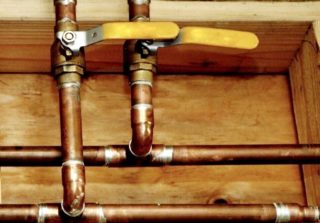
Domestic gas pipes are made of steel and copper. There are also bronze and brass, but extremely rare.
Both materials have the main quality for a gas pipeline: they absolutely do not allow gas to pass through. Options are evaluated according to the following characteristics:
- Copper does not corrode. The service life of the gas pipeline is 50–100 years. Steel is susceptible to corrosion and with the most careful maintenance will not last more than 20 years.
- Copper is ductile. Small diameter tubes can be bent. Steel need to be welded.
- The cost of a copper pipeline is noticeably higher. The steel gas pipe has the lowest price.
Copper pipes are much prettier. They do not need periodic painting and are often part of the kitchen interior.
Standards and restrictions for pipe laying
SNiP 42-01-2002 regulates the construction of gas pipeline structures serving the end user. The rules are mandatory, as they ensure fire safety and compliance with sanitary standards.
In the apartment
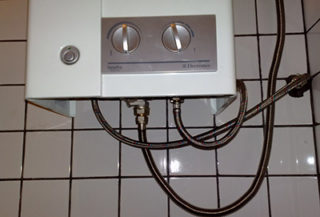
The gas pipe is laid according to a previously developed scheme. Its task is to supply fuel to gas equipment: stove, boiler, boiler. Usually all appliances are placed in the kitchen. Installation rules in dwellings are very strict:
- installation in residential premises or ventilation ducts is strictly prohibited;
- crossing of window or doorways is not allowed;
- the gas pipeline can only be laid in rooms with a height of at least 2.2 m, well-ventilated or equipped with ventilation;
- the distance from the pipe to the floor is at least 2 m;
- if structures with flexible arms are used, their length should be less than 3 m;
- surfaces next to gas appliances are insulated or trimmed with panels that are insensitive to temperature;
- installation of the gas pipeline in the wall or behind decorative trim is prohibited, it must be freely accessible.
When designing a gas supply, a gas meter is provided.
In a private house
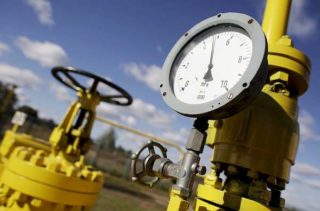
Inside the building, they are guided by the rules described above. When laying an external gas pipeline, the following recommendations are followed:
- The higher the pressure in the supply gas pipeline, the further it fits from the house. The distance between the low pressure circuit and the foundation of the house is at least 2 m.If a medium pressure line runs next to the building, the distance increases to 4 m.
- There must be at least 50 cm from the gas pipeline to the door or window opening.
- From the pipe to the roof, at least 20 cm.
- The plastic gas pipeline is laid underground. Steel allows for both aboveground and underground installation.
The fewer turns and bends the gas circuit includes, the more reliable it is.
Gas pipe laying options
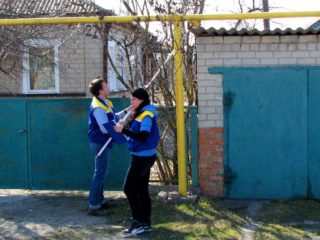
There are several ways to lay a gas pipeline. The choice is made taking into account the characteristics of the site, pipeline material, gas pressure.
Underground
It is considered the safest, as it excludes mechanical stress and the influence of sunlight. This method is ideal for plastic tubing. For steel, not the best, since the latter need periodic inspection and maintenance.
The method is costly. The pipes are laid to a depth below the level of freezing of the ground - at least 0.8 m.In cold regions, the depth of the trench increases to 1.2 m.
Overground
Less secure method. The pipeline is installed on metal risers of different heights.This method is resorted to with high relief and complexity of the site, with a large number of buildings, where it is difficult to fulfill all the requirements of SNiP. Only steel pipes for gas can be used.
Interior
Inside the building, the gas pipeline is installed in an open way. It is allowed to hide communications in pre-made grooves in the wall, but they can only be covered with easily removable panels. Free access to pipes is a prerequisite.
Gas pipeline security zone
- For gas supply to a private house, pipes with a cross section of no more than 80 mm are used. The security zone is 2 m on each side if the pipes were laid by an above-ground or above-ground method.
- For circuits made of polyethylene products, the protection zone is 3 m from the axis of the pipeline.
- If communications are laid through a forest belt or an area with shrubs, the dimensions increase to 3 m.
- If the gas pipeline is mounted above the ground, the distance from the tree to it should be equal to the height of the tree.
In the security zone, it is forbidden to light a fire, loosen the soil to a depth of more than 30 cm, store chemical compounds (acids, alkalis) and any household waste. Also, it is not allowed to erect any buildings within the zone.

